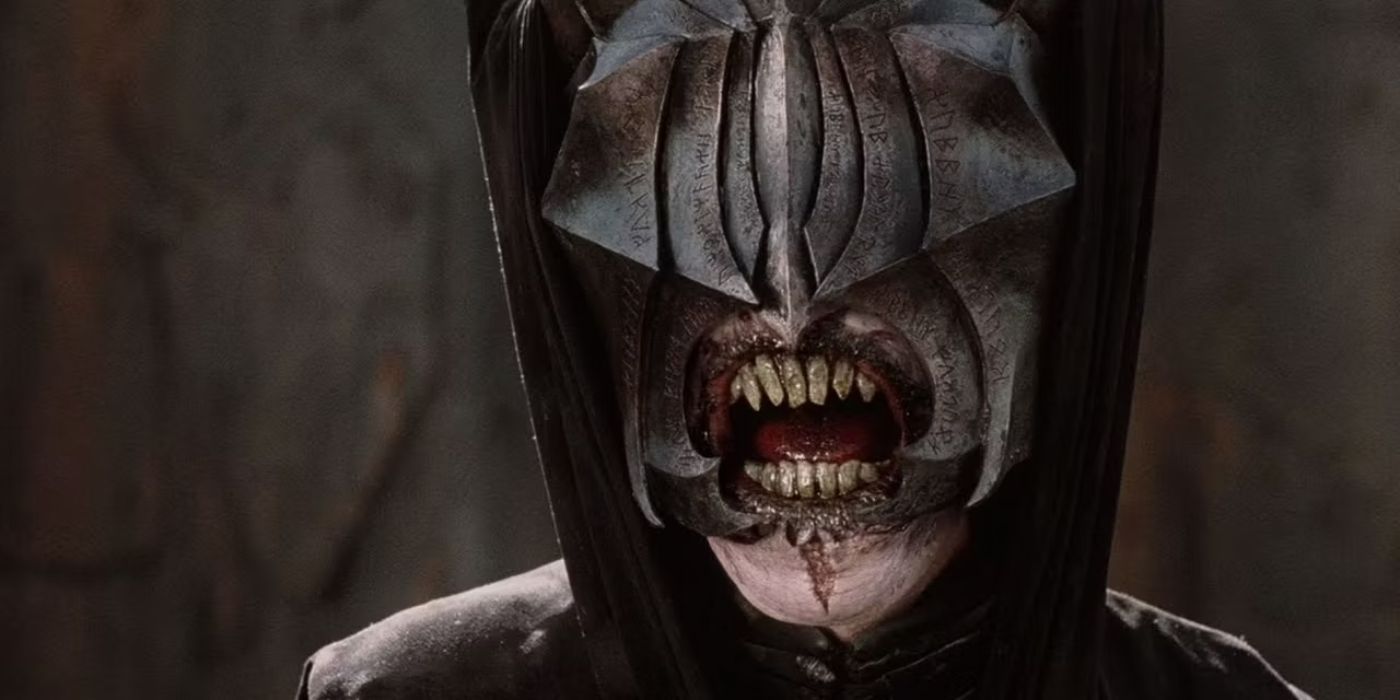Read update
- With five new games set to come out within the next two years, it's the perfect time to dive back into some LotR lore. Polygon has listed down some of the games that fans can look forward to in the near future, which include The Lord of the Rings: Gollum, The Lord of the Rings: Heroes of Middle-earth, The Lord of the Rings: Return to Moria, and an untitled game by Weta Workshop. Only time will tell if fan-favorite characters and even LotR extended edition scenes will be referenced in these promising titles.
While Peter Jackson's Lord of the Rings trilogy is widely regarded as a well-made adaptation of J.R.R. Tolkien's work, the extended editions earned even more praise. These editions offer at least an hour of additional material for each film, and they do not disappoint.
Some scenes are elaborations of passages from Tolkien's novel, using lore to bring Middle-earth to life, while some offer additional interactions between characters, strengthening their dynamic on-screen. Best of all, some are just comedic for the sake of comedy. No matter what the extra footage entails, almost anyone could agree that they all bring something magical and new to the story.
Updated on February 17th, 2023, by Hannah Saab:
With five new games set to come out within the next two years, it's the perfect time to dive back into some LotR lore. Polygon has listed down some of the games that fans can look forward to in the near future, which include The Lord of the Rings: Gollum, The Lord of the Rings: Heroes of Middle-earth, The Lord of the Rings: Return to Moria, and an untitled game by Weta Workshop. Only time will tell if fan-favorite characters and even LotR extended edition scenes will be referenced in these promising titles.
1 Concerning Hobbits
'The Fellowship Of The Ring' (2001)
The introduction of the Hobbits of Middle-earth was ripped directly from Tolkien's page. Although it isn't necessarily needed for the structure or plot of the first film, it does give additional insight into the creatures of Hobbits. The scene opens with Bilbo (Ian Holm) writing about hobbits in a chapter of his book, which would later become The Red Book of Westmarch.
Bilbo writes about Hobbits' love for food, ale, general merriment, and all things that grow. It highlights the simple life of Hobbit folk, contrasting the previous scene, a flashback sequence in which the 9 Ring-bearers (plus Isildur) are corrupted and fall into darkness. Separating the introduction of Hobbits from that of Dwarves, Elves, and Men is to imply that Hobbits are different from all other races of Middle-earth. Of course, they are, as they don't lust for power, and they prefer good-tilled earth over gold and silver. With Howard Shore's recognizable and charming track of the same name playing over the scene, viewers already start to feel a special place in their hearts for Hobbits and their ways, and wonder what role they will have to play in this fantasy epic.
2 Galadriel's Gifts
'The Fellowship Of The Ring' (2001)
The scene where Galadriel (Cate Blanchett) bestows upon each member of the fellowship a special gift had to be shortened for the sake of time, so in the theatrical version, fans only see her give Frodo (Elijah Wood) the light of Earendil. In the Lord of the Rings extended edition, she gives Legolas (Orlando Bloom) a bow, Merry (Dominic Monaghan) and Pippin (Billy Boyd) belts and daggers, and Sam (Sean Astin) Elven-made rope. Perhaps the most important gift of Galadriel's however, is that which she gives to Gimli (John Rhys-Davies) – three strands of her golden hair.
The importance of Galadriel's hair isn't explained in the theatrical version or the extended, but in Tolkien's lore, her hair is said to encompass the essence of the Two Trees of Valinor. When Feanor, the most powerful Elf ever to live, implored her for a strand three different times, she denied each request. Thousands of years later, when Gimli asked for one strand, she gave him three. It is an important moment for Gimli's character, as Dwarves and Elves are at odds when The Fellowship of the Ring takes place, shown in many of Legolas and Gimli's interactions. However, Galadriel's beauty had such an effect on everyone's favorite Dwarf that he would never suffer anyone to speak ill of her again, and he and Legolas would soon become good friends.
3 Ode to Gandalf's Fireworks
'The Fellowship Of The Ring' (2001)
As short as this scene may be, it's just too special to leave out. When the fellowship stops in Lothlorien after Gandalf's (Sir Ian McKellen) demise, Sam listens to the Elves' lament for him. He comments that they probably don't have a verse on his fireworks, so he writes one himself: "The finest rockets ever seen, they burst in stars of blue and green, or after thunder golden showers, came falling like a rain of flowers."
As unimportant as this is to the plot (and as awkward of an element as it is in the LotR movie), it gives a lot of depth to Sam's character, and to Hobbits in general. With all of Gandalf's achievements and talents, only a hobbit would think to mention something as trivial as fireworks, and it's only in The Fellowship of the Ring extended edition. The moment serves as yet another reminder that above all, hobbits cherish laughter and merriment.
4 Treebeard's Song & Entwives Lore
'The Two Towers' (2002)
The Ents are a huge part of The Two Towers, but the theatrical version doesn't properly explore their backstory. This specific scene has Treebeard (also John Rhys-Davies) singing a song for Merry and Pippin, and if there's one thing The Lord of the Rings doesn't have enough of, it's songs. The song, it is explained in a later scene (also only present in the extended editions) is a lament for the missing Entwives.
The Entwives were the female counterparts to Ents, who mysteriously disappeared at the end of the war, thousands of years prior to the events of The Two Towers. The loss of the Entwives have caused the Ents to suffer in mourning, as they lead the everlasting search to recover them. This lore aids in the process of world-building, as it gives significant background, as well as some insight into their nature (pardon the pun). The Ents feel love, pain, and sorrow, and they continuously yearn for their wives to return. It is with the inclusion of the Entwives lore that fans know Treebeard is going to be a force for good, rather than evil, as his songs of yearning reflect. Tolkien's evil beings do not love or yearn, they only crave or lust.
5 Boromir, as He Was
'The Two Towers' (2002)
One of the biggest losses in the theatrical versions was Boromir (Sean Bean). With the cutting of several scenes, the films lose a huge amount of characterization for him, and he seems much less likable because of it. These added LotR extended edition scenes give his character depth and put an emphasis on his concern for his people, making his sacrifice at the breaking of the fellowship much more impactful.
When Faramir (David Wenham) captures Frodo and Sam, fans are given a flashback of Boromir and Faramir taking Osgiliath, and it does both the characters a justice that is not seen in the theatrical. The Boromir here is much different from the one that appears in Fellowship of the Ring, and viewers are given a chance to appreciate just how tragic this LotR character's backstory really is. He is not power-hungry or aggressive, he is loving and funny, and he is constantly defending his brother from abusive Denethor (John Noble). Watching Boromir in this scene shows just how strong the Ring's effect on him was. It is another example of how destructive the Ring is, it makes fans feel for Faramir and his loss, and it provides a nice introduction to Denethor, so audiences know what to expect from the final film.
6 Gandalf vs. the Witch-King at Minas Tirith
'The Return of the King' (2003)
In the theatrical version, it's painfully clear that the Witch-King of Angmar is one of the most terrifying and powerful beings in Middle-earth. Also known as the Lord of the Nazgûl, the villain's presence evokes fear and trepidation, even if viewers aren't sure exactly how scared they should be.
The extended edition of The Return of the King makes it obvious just how strong the Witch-King really is, as it depicts an intense confrontation between Gandalf himself and Sauron's servant. With Pippin brought to his knees and cowering in the background, Gandalf manages to hold his ground only for a little bit, before the Nazgul's power causes his staff to break and the Wizard to fall off his horse. The Witch-King almost killed him then, but is thankfully distracted by the Rohirrim.
7 The Celebration at Edoras
'The Return of the King' (2003)
In the extended edition of Return of the King, the Rohirrim throw a party at the capital of Rohan to celebrate their successful defense of Helm's Deep. Edoras soon turns into a lively setting full of drinks and dancing. Merry and Pippin are, of course, leading the dancing part on top of a table, while the other exhausted but happy fighters cheer and join in.
It's Gimli and Legolas' hilarious drinking game that steals the scene, though, as the Dwarf learns that Elves really are immune (or at least have really high tolerance) to the intoxicating effects of alcohol. This moment alone has inspired countless memes and jokes that are still referenced in discussions today, which wouldn't be possible without the extended edition.
8 Saruman's Death
'The Return of the King' (2003)
While the theatrical version of The Return of the King leaves Saruman's (Christopher Lee) fate open-ended, the LotR extended edition closed that book with a vengeance. After Isengard falls and Saruman is surrounded, Gandalf asks for information on the enemy. To be expected, Saruman is uncooperative and instead spends the time taking shots at Theoden (Bernard Hill). Still, the wise and patient Gandalf doesn't let Legolas kill him.
However, Wormtongue (Brad Dourif) is up there with him, and after a very ill-advised smack to poor Wormtongue's face, he stabs Saruman in the back, literally. It is not the knife though, but the 500-foot fall from his tower and the spike he gets impaled on that actually does him in. A death worthy of a member of The Istari, surely.
9 Aragorn Heals Eowyn
'The Return of the King' (2003)
Like Boromir, Eowyn (Miranda Otto) loses a lot of scenes in the theatrical versions, but her characterization doesn't suffer as much, since she's still absolutely awesome. Still, one scene that was cut showed her gravely wounded from her battle with The Witch-king of Angmar, rescued by Eomer (Karl Urban) and healed by Aragorn (Viggo Mortensen). It's a beautiful scene; even though Aragorn couldn't reciprocate Eowyn's feelings, the two have a pretty solid and unexpected friendship in LotR that has been steadily building since The Two Towers, and the fact that Aragorn is the one who saves her, in the end, is quite poetic.
While in the infirmary Eowyn meets Faramir, also wounded from battle, and a romance blossoms. This is largely off-screen even in the extended editions, but this short scene at least gives the audience some context as to how these two met and what kind of relationship they will have. It's a pretty romantic sub-plot considering it only lasts about 15 seconds.
10 The Mouth of Sauron
'The Return of the King' (2003)
A decent amount of the fear Sauron instills is due to the fact that he doesn't have a face. He is associated mainly with The Eye, and even in the flashback sequences, he is wearing a helmet. The Mouth of Sauron, as he is called since he has long since forgotten his own name, is one of Sauron's oldest and most devoted followers. He is fantastically creepy. With a helmet covering all of his face except for his bloody mouth, he looks like something straight out of a Guillermo Del Toro movie.
The Mouth's interaction with the fellowship is pretty sour from beginning to end, but it comes to a head when he brings forth Frodo's mithril shirt as evidence that the Ring-bearer has been caught, tortured, and killed. Naturally, everyone is filled with grief and rage, and Aragorn swiftly decapitates Sauron's servant, officially starting "The Battle of the Black Gate." This scene isn't necessary to the concluding battle of the film, but it does a great job at portraying Sauron's malicious nature, and watching cool-headed Aragorn execute one of Sauron's most faithful followers is a satisfying moment that we all deserve after having to watch Theoden die.

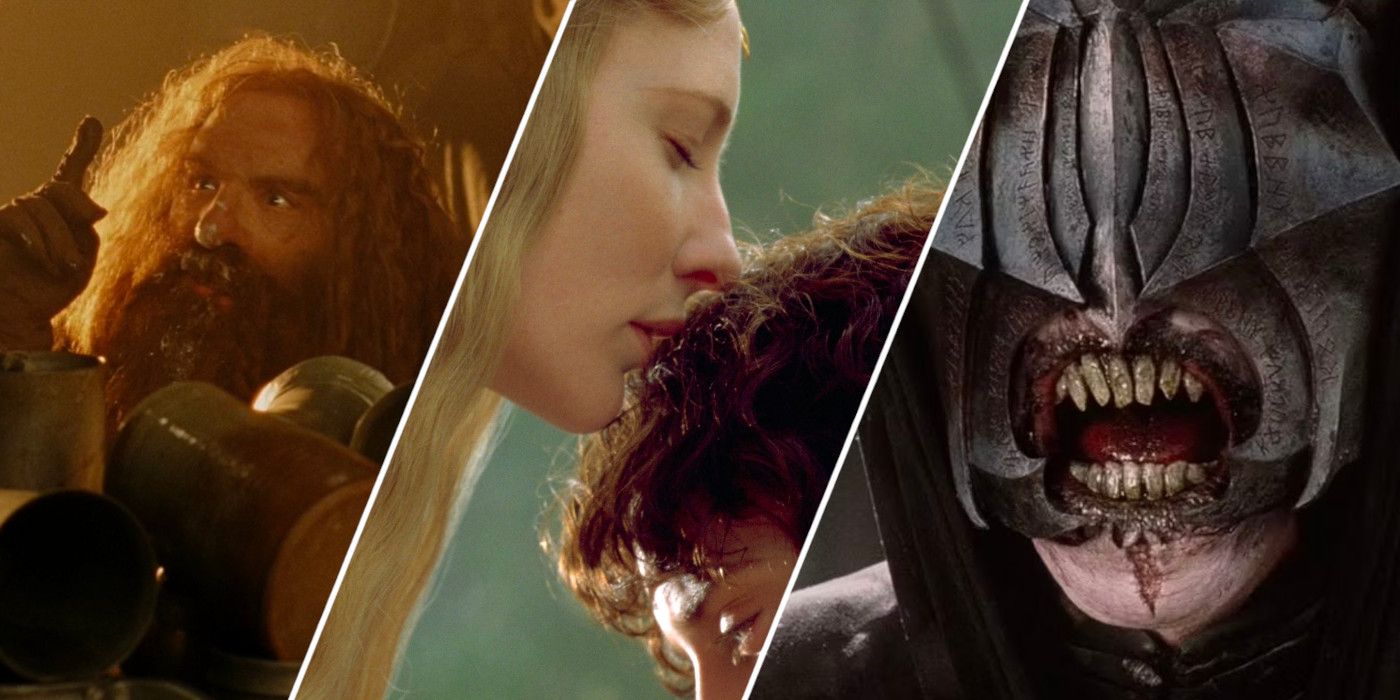
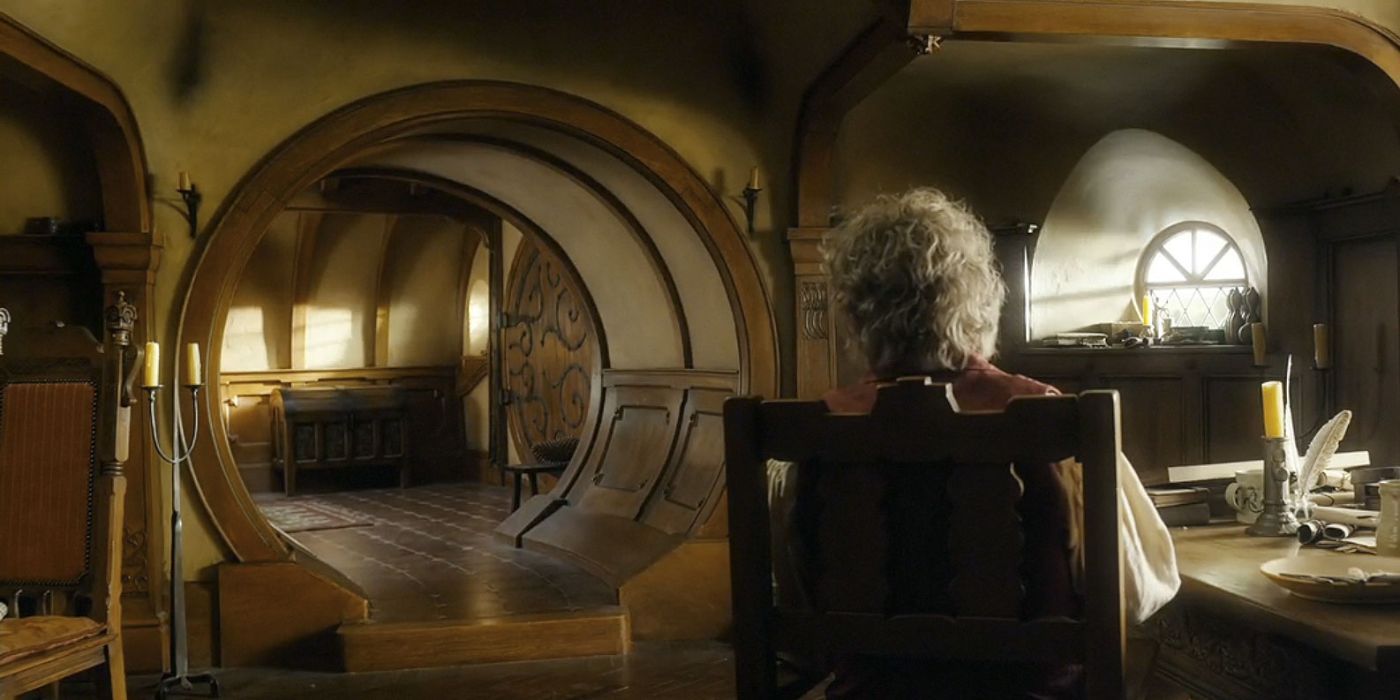
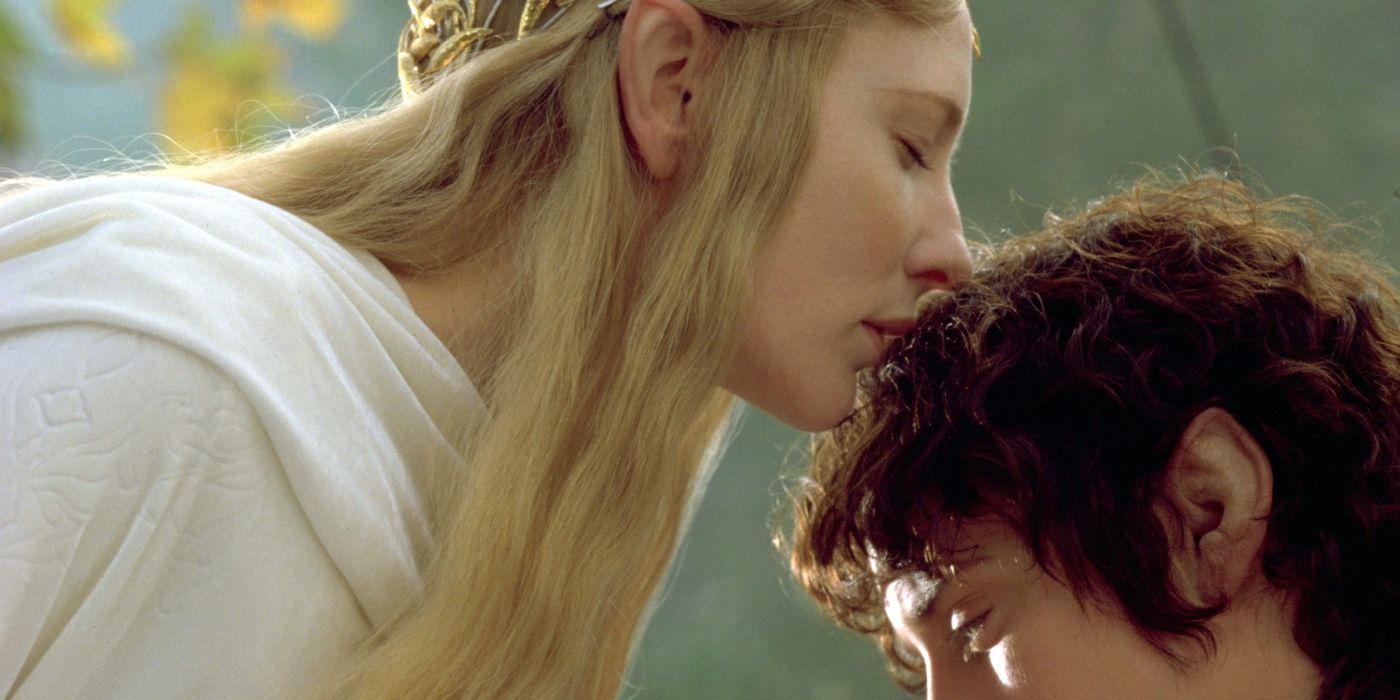
.jpeg)
.jpeg)
.jpeg)
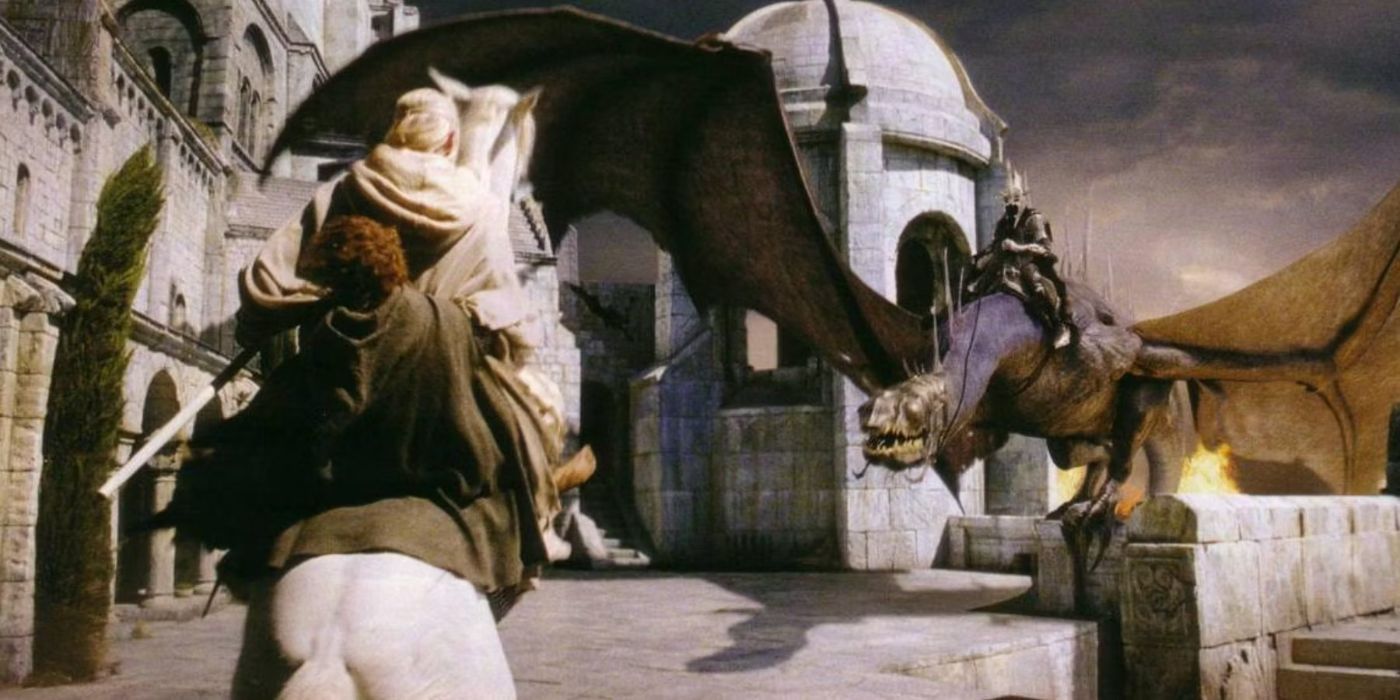
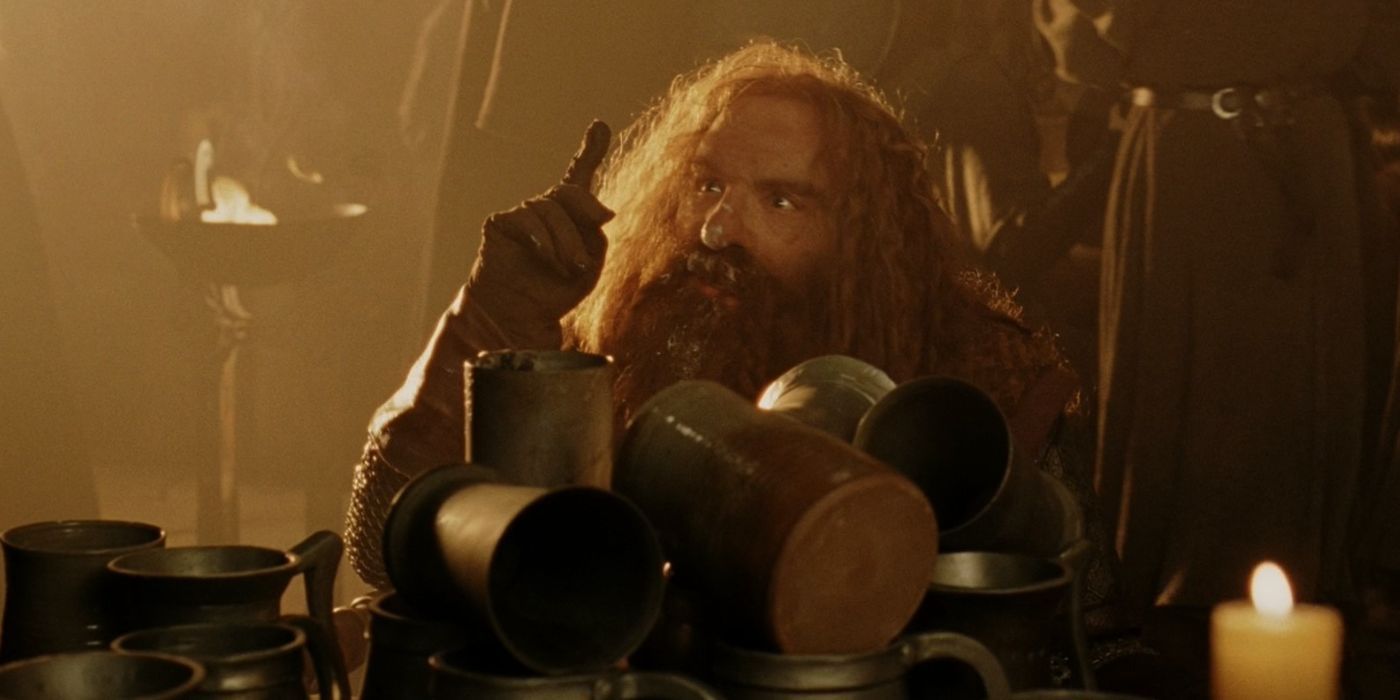
.jpeg)
.jpeg)
